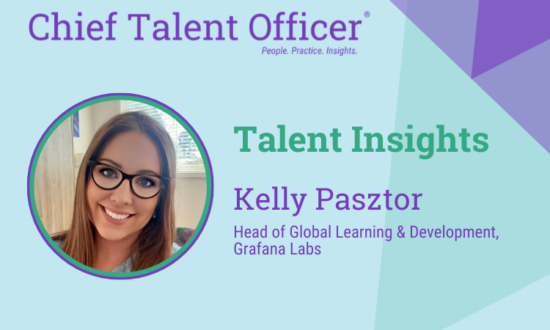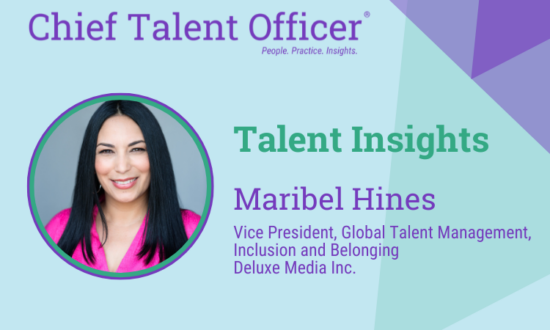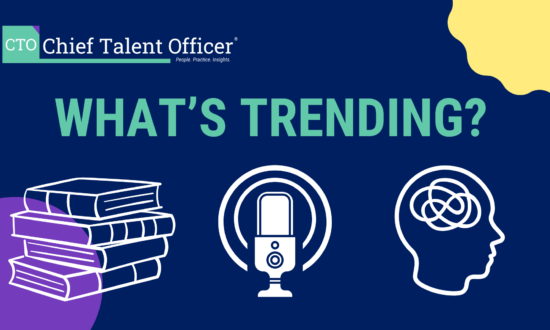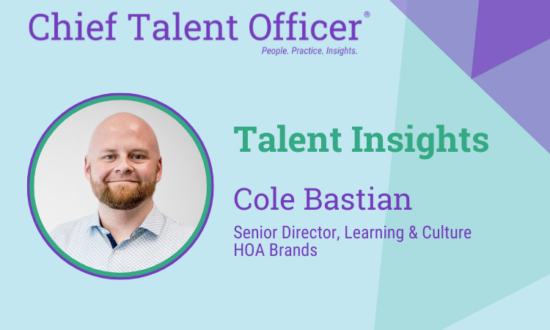Elliott Masie was invited to give a keynote address in Taiwan at an Association for Talent Development leadership conference. When Masie arrived, he ran into leadership coach Marshall Goldsmith, who lives just three blocks from Masie in New York — only to find out that Goldsmith was the other keynote speaker at the same event.
Masie, CEO of The Masie Center, an international think tank focused on learning and workplace productivity, and a columnist for this publication, said the coincidence was funny but also sad. “Here we are in Taiwan, in Asia, where they were doing training and learning way before the U.S., and the two major keynoters they got were white guys over 60 from New York,” Masie said.
Masie’s experience highlights a lack of diversity in L&D, particularly among the thought leadership that represents the field. In fact, Chief Learning Officer data from its Talent Tracker service finds that 89 percent of learning and training managers are white. According to the data, 5.6 percent of learning managers are black, 9 percent are Hispanic or Latino, and 2.2 percent are Asian.
Talent Tracker, an analytics service developed by the Human Capital Media Research and Advisory Group, integrates data from open sources including the U.S. Census, National Science Foundation, World Bank and Bureau of Labor Statistics.
Jayzen Patria, a diversity and inclusion thought leader and advocate in the learning industry, said this statistic validates what many understand to be true about the learning space — that L&D hasn’t attracted or cultivated a significant number of people of color in the field. Patria said the lack of representation in the learning field poses a huge issue as corporate training teams are looked at to be ambassadors of culture and organizational strategy, which now typically include D&I in objectives or values.
Diverse? Not So Much
Patria said the L&D field may have a false sense of diversity because the learning space has generally been an inclusive environment for women and individuals in the LGBTQ-plus communities. “But clearly the number of people of color working in the space is not reflective either of the communities that we serve or likely even the workforces that we serve internally,” Patria said.
He said he hasn’t seen a significant attraction and recruiting strategy in the learning space on par with those strategies in other company operations. “Most organizations, at least in the corporate space, are doing significant campus recruiting and have many early career programs for different functional areas or the core business or operation of their business,” he said. “Certainly, we’ve seen that a bit in the HR space, but I haven’t personally seen anything that truly targeted the folks in the education or learning field.”
Masie added that people of color entering the talent world are often pulled into benefits, recruitment or diversity itself. “Anybody who shows deep talent in learning today who has diversity is very much in the marketplace to be promoted,” he said.
He added that L&D leaders’ networks often are not diverse. “Your network needs to develop so that people of color are seen and given visibility,” he said. “But right now, we’re still in the early days of accepting that diversity is important in the learning field.” Masie admitted that in his case, it’s easier to find male CLOs in his network than female CLOs, so he often asks colleagues to suggest female learning leaders to invite to his conferences and events.
Masie said learning professionals need to recruit, retain and promote diverse people and reduce obstacles preventing this. He recalled one company looking to hire a vice president for talent, but one of their screening qualifications was that the applicant have an MBA from a top-tier university.
“Ironically, by putting that in, they actually excluded some of the people they would want,” he said. “There may be somebody who’s perfect for that role but didn’t have an MBA because they didn’t have the money or the connections.” He said learning leaders need to look at their own unconscious bias to confront issues that make it difficult to increase diversity within the field.
JP Morgan Chase CLO Jesse Jackson said learning leaders should be loud and proud about their objective to recruit the best and brightest diverse talent. He said this process could involve recruitment at historically black colleges and an increased effort to create accessible pipelines from other fields to learning and development.
Who’s On Stage?
Masie said a big piece of the problem is that so much of learning content created today originates from older white men. “We have a whole bunch of white guys over 60 who are the content leaders or originators,” he said. “If we really want to get more diversity, which I think we must, we need to make sure that our content leadership is diverse as well.”
Patria said this issue stems from the fact that it was these men who were pioneering in the field in the 1960s and ’70s. “We have created, at least from a North American or a Western standpoint, an image of what the ultimate learning executive or guru in the learning space is,” he said. “And while clearly Elliott and his baby boomer peer group have contributed in incredible ways to the learning field, there is potentially a bias that we don’t want to look outside that population.”
Patria said L&D leaders should be thoughtful about who is on stage at a learning conference. “As we curate learning, as we curate events, are we curating in a way that we are thinking about inclusion and that we’re thinking about having diverse voices as part of the broader learning experience?” he said.
Masie said conference hosts need to reach out to a diversity of people, not necessarily to talk about D&I, but to talk about leadership and training from their point of view.
Patria added that there’s much to learn from the straight white male baby boomer generation as well —sometimes it’s just a matter of thoughtful curation of questions. “Are we asking folks who don’t seem to be diverse about what their impression of diversity is?” he asked. “How do they leverage and lead for inclusion and diversity? Do we ask men how they balance work and life? Do we ask them about their interactions with their families?”
Patria said when people with non-white backgrounds are on the platform, suddenly those questions are fair game. “We’re going to ask them about their unique diverse experience,” he said. “But we don’t tend to ask those questions of straight white men and that can really open up the conversation and make it more comfortable for other people to share their stories when folks with privilege and power are also being vulnerable and sharing those challenges.”
Jackson agreed that those who dominate learning conferences and keynote addresses reflect the ethnicity mix of learning professionals — they are mostly white. As a result, Jackson said this could have a negative effect in getting an accurate view of the D&I landscape — not having a diverse or broad set of voices around the diversity issue to help understand how to effectively fix it. “If those individuals incumbent in those seats are not reaching out to the right stakeholders to solicit and acquire greater thought diversity, from different genders and ethnicities, in terms of how we solve this, that’s a problem,” he said.
In addition to learning conferences, L&D leaders also need to be intentionally inclusive in deciding who to invite to the front of the classroom as subject matter experts or executives, Patria said.
L&D’s Role in D&I
Patria said L&D is already focused on diversity, inclusion and belonging because the learning space is about helping people develop awareness. “We’re all about building skills that are inclusive for leading people, influencing people and communicating better with folks,” he said. “We have the obligation to build diversity, inclusion and belonging all the way through our initiatives and our experiences.”
But Patria said it’s difficult for L&D to effectively do that when learning professionals don’t reflect the workforce they serve. “Our L&D folks are on the platform, providing intervention and performance consulting with their internal clients all the time,” he said. “We really look to them to be ambassadors of the culture, the values of the organization and the leadership vision all the way around strategy. It’s difficult for our field to be an ambassador of that if we’re not representative of the workforce and the broader population.”
Patria said the people put on the platform in the L&D field are the equivalent of people seen in media. “TV and film are constantly thinking about how to truly represent everyone — how to tell stories that are universal and bring people from multiple backgrounds in to be on stage or on screen,” he said. “In an organization, folks in L&D are like your ‘on-air talent.’ So it really means that the optics count here.”
Further, Patria said the lack of diversity can affect the quality of the content curated by L&D professionals. He said regardless of the backgrounds of the learning content curators, L&D professionals must include diverse people from across the learning and HR functions in the content design.
Patria said one way to address this issue is through leveraging employee resource groups in the design and piloting process of materials. “They will be able to catch those things that either feel like they rub the wrong way in terms of language or potentially are not accessible to all populations,” he said. “Even from an imagery standpoint, to reflect if there are folks that look like them in the materials.” Patria added that everyone needs to go through some process to understand how their own experiences and biases affect the design and delivery of their learning content.
Jackson said L&D can play a pivotal role in ensuring that the workforce is aware of issues such as microinequities and unintentional bias. “Really having rigor around how we are caring for the ongoing training of our professionals and making sure microinequities, diversity and inclusion training is part of that for L&D, as it should be for the broader organization,” he said.
He said L&D can play a leadership role in the discussion about how firms move that agenda forward within the context of the business. “What are the right human capital practices that, if put in place, can help us create a more fair, more equitable platform for all employees to thrive in?”
Jackson said L&D can ensure it is incorporating the right visuals into its content, “outlining not just the monolithic customer set, but the true diversity of the markets we support in all corporate spaces. In many cases, they are growing more diverse in an accelerated fashion. Those companies that fail to do that will be going empty soon because the markets will leave them behind.”
He said L&D can model inclusive behavior by reflecting it. “How do we look as an organization?” Jackson said. “How does that culture show up in how we execute?” He said the ability to deliver excellence and serve as a role model is a critical part of L&D’s role within the business.
However, Jackson said no organization has effectively cracked the code on how to truly make underrepresented groups feel whole and included, but that responsibility shouldn’t fall solely on L&D. “It can’t be stood up exclusively on learning’s ability to move the needle on diversity, representation and inclusion,” Jackson said. “It has to acknowledge that training is one element in a multiple-element engagement strategy to drive greater representation, diversity and inclusion in an enterprise.”
The Big Picture
As is widely documented, the issue of representation and diversity isn’t unique to L&D. In fact, according to a 2017 Fortune article by Grace Donnelly, only 16 Fortune 500 companies share demographic information about their employees. Of the ones that do, 80 percent of high-ranking officials are men and 72 percent of those men are white, according to another 2017 Fortune report by Stacy Jones.
Jackson said D&I is a business problem, not a learning problem. “As with other business problems, there is a key element that as L&D, we are responsible for driving, but we need alignment with the rest of the C-suite,” Jackson said. “We can have the most capable, engaged L&D department, but if that view is not one that is fostered or cared about by the CEO, it will be even more difficult to shift the culture.”
It’s also well recognized that a diverse workforce has dramatic effects on business. According to a 2015 McKinsey & Co. study, “Why Diversity Matters,” companies in the top quartile for racial and ethnic diversity are 35 percent more likely to have returns above national industry medians.
Jackson said L&D should articulate the business case for D&I. “Those companies that do in fact have a diverse workforce are more profitable, are more effective in supporting customers, are more resilient and are more agile in respect to moving at the speed of business,” he said.
Jackson said the business case for D&I is about ensuring that companies can support and serve the markets they operate in more effectively. “The extent to which individuals within the learning and development ecosystem don’t understand that, in many respects, they sub-optimize their ability to deliver value to their enterprise — that shows up on their balance sheet and on their income statements in favor of those companies that do in fact have greater diversity.
















